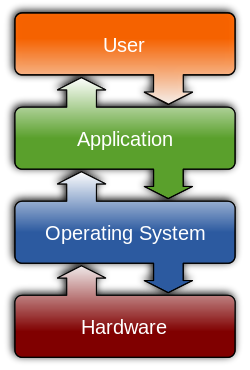Linux: Difference between revisions
Mr. MacKenty (talk | contribs) No edit summary |
Mr. MacKenty (talk | contribs) No edit summary |
||
| Line 3: | Line 3: | ||
Linux is a Unix-like and mostly POSIX-compliant computer [[operating system]] (OS) assembled under the model of free and open-source software development and distribution.<ref>https://en.wikipedia.org/wiki/Linux</ref> | Linux is a Unix-like and mostly POSIX-compliant computer [[operating system]] (OS) assembled under the model of free and open-source software development and distribution.<ref>https://en.wikipedia.org/wiki/Linux</ref> | ||
The purpose of this page is provide practical resources to student to understand and use Linux. | The purpose of this page is provide practical resources to student to understand and use Linux. Please read our page about the [[CLI | command line interface ]] | ||
Tools you can use to manage different parts of the Linux operating system: | Tools you can use to manage different parts of the Linux operating system: | ||
Revision as of 08:49, 9 September 2016
Linux is a Unix-like and mostly POSIX-compliant computer operating system (OS) assembled under the model of free and open-source software development and distribution.[1]
The purpose of this page is provide practical resources to student to understand and use Linux. Please read our page about the command line interface
Tools you can use to manage different parts of the Linux operating system:
| The OS manages | Linux tools you can use to understand what is going on |
|---|---|
| Memory | top, htop, free, vmstat |
| Processes | top |
| Files | File system, df, du, mount, lsof |
| Security | fstab, last, who, /var/log/auth.log |
| CPU Scheduling | perf |
| Devices, Device I/O | iotop, iostat |
| Interrupts | perf |
| Networks | netstat, top, tcpdump, iptraf, iftop, nmon |
